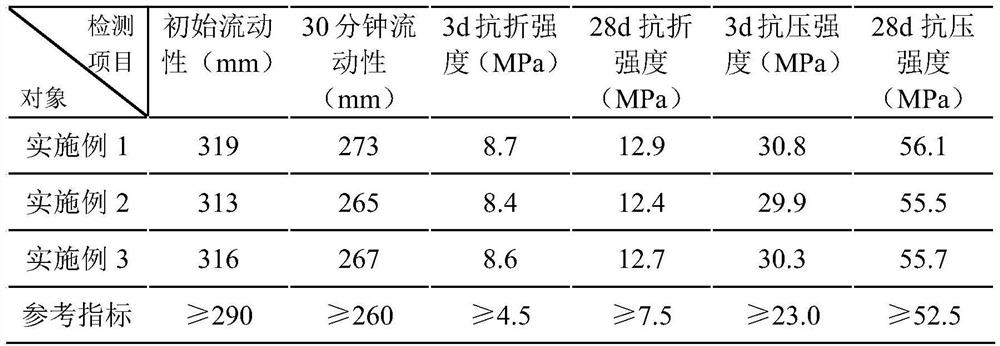Method for producing seawater corrosion resistant cement by using construction waste
A construction waste and anti-seawater technology, which is applied in cement production, etc., can solve the problems that the concrete structure cannot reach the service life, the structure is difficult to reach the designed service life, and the durability of the concrete structure is affected, so as to achieve the continuous growth of strength in the later period and good economy. and social benefits, the effect of low price
- Summary
- Abstract
- Description
- Claims
- Application Information
AI Technical Summary
Problems solved by technology
Method used
Image
Examples
Embodiment 1
[0026] A seawater corrosion-resistant cement produced from construction waste, comprising the following raw materials in parts by weight: 44 parts of sulphoaluminate cement clinker, 6 parts of early strength agent, 0.6 part of water reducing agent, 0.004 part of air-entraining agent, retarding 0.4 parts of activator, 10 parts of steel slag, 24 parts of construction waste and 0.09 parts of self-made activator.
[0027] Its production method comprises the following steps:
[0028] S1: The construction waste and water are mixed, then pulverized, and then dried to make the water content lower than 1.4%; the steel slag is dried, and the water content of the dried steel slag is lower than 2.8%, and then used for later use.
[0029] S2: Mix the construction waste particles obtained in step S1 with steel slag and grind them with a cement mill, then pass through a 100-mesh screen to dry, then mix with sulphoaluminate cement clinker, early strength agent and self-made activator and add ...
Embodiment 2
[0036] A seawater corrosion-resistant cement produced by using construction waste, including the following raw materials in parts by weight: 48 parts of sulphoaluminate cement clinker, 8 parts of early strength agent, 0.8 part of water reducing agent, 0.006 part of air-entraining agent, retarding 0.7 parts of agent, 16 parts of steel slag, 28 parts of construction waste and 0.12 parts of self-made activator.
[0037] Its production method comprises the following steps:
[0038] S1: The construction waste and water are mixed, then pulverized, and then dried to make the water content lower than 1.4%; the steel slag is dried, and the water content of the dried steel slag is lower than 2.8%, and then used for later use.
[0039] S2: Mix the construction waste particles obtained in step S1 with steel slag and grind them with a cement mill, then pass through a 150-mesh screen to dry, then mix with sulphoaluminate cement clinker, early strength agent and self-made activator and add t...
Embodiment 3
[0046] A seawater corrosion-resistant cement produced by using construction waste, comprising the following raw materials in parts by weight: 46 parts of sulphoaluminate cement clinker, 7 parts of early strength agent, 0.7 part of water reducing agent, 0.005 part of air-entraining agent, retarding 0.6 parts of activator, 14 parts of steel slag, 26 parts of construction waste and 0.11 parts of self-made activator.
[0047] Its production method comprises the following steps:
[0048] S1: The construction waste and water are mixed, then pulverized, and then dried to make the water content lower than 1.4%; the steel slag is dried, and the water content of the dried steel slag is lower than 2.8%, and then used for later use.
[0049] S2: Mix the construction waste particles obtained in step S1 with steel slag and grind them with a cement mill, then pass through a 120-mesh screen to dry, then mix with sulphoaluminate cement clinker, early strength agent and self-made activator and ...
PUM
 Login to View More
Login to View More Abstract
Description
Claims
Application Information
 Login to View More
Login to View More - R&D
- Intellectual Property
- Life Sciences
- Materials
- Tech Scout
- Unparalleled Data Quality
- Higher Quality Content
- 60% Fewer Hallucinations
Browse by: Latest US Patents, China's latest patents, Technical Efficacy Thesaurus, Application Domain, Technology Topic, Popular Technical Reports.
© 2025 PatSnap. All rights reserved.Legal|Privacy policy|Modern Slavery Act Transparency Statement|Sitemap|About US| Contact US: help@patsnap.com

